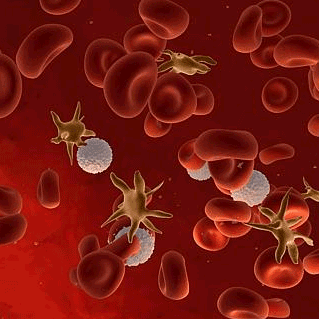 Research by Adelaide scientists has identified molecules in the body which could potentially unlock treatment to stop the spread and growth of common cancers.
Research by Adelaide scientists has identified molecules in the body which could potentially unlock treatment to stop the spread and growth of common cancers.
An Centre for Cancer Biology team working in cancer biology have been recognised for their ground-breaking research by having a paper about their discoveries on circular RNA molecules published in ‘Cell’, one of the world’s leading scientific publications.
In recent years biologists have been aware our genes can produce various different types of RNA molecule that help to control the activities of our genes and the orderly functioning of our cells.
Scientists recently discovered that another, unusual type of RNA molecule (circular RNA) is made in all tissues in the body, but they had little idea of what the function of these circular RNA molecules might be. Some cancer researchers thought it was possible they were merely by-products of cellular processes with no real function.
Lead researcher Simon Conn and colleagues in Professor Greg Goodall’s laboratory at the Centre for Cancer Biology, aided by the powerful technology of next-generation DNA sequencing and highly developed bioinformatics provided by the CCB’s ACRF Cancer Genomics Facility, have now discovered that these circular RNA molecules are produced in an extremely controlled way.
The SA Pathology researchers found that their numbers increase dramatically when cells undergo a process called Epithial-to-Mesenchymal Transition (or EMT) which is strongly linked to cancer metastasis.
“This particular work only commenced less than two years ago”, says Prof Goodall.
“Of course the knowledge that formed the basis for this discovery has been the result of nearly a decade’s work in the area, with other researchers already having achieved a lot of the groundwork to enable us to take this next step.”
“This is further validation of the value of CCB (Centre for Cancer Biology). It provides the people, the resources and environment that allow us to undertake this type of research in a very competitive space, so that there’s genuine cross-pollination and interaction across intersecting studies and research areas,” he adds.
“It’s very satisfying having this paper published in ‘Cell’. It’s a prestigious publication and it’s fantastic for our team of ten. For those involved, it enhances their opportunities. Young scientists’ career paths can be tenuous and a hard slog and they experience a lot of stress wondering how they’ll survive in the professional structure. But this demonstrates that you can have those ‘eureka moments’ which keep the passion alive and also that the work itself can have an effect”, Prof Goodall said.
“That moment doesn’t last, of course. Like footy, you move onto the next game the following week and the work that still lies ahead. But - to quote a colleague - when you reach these heights, everyone benefits. And ultimately it’s about our patients. I strongly believe in the long term benefits for those people in the future who have cancer or are at risk of cancer. This adds to the detailed understanding of how to treat it, and perhaps even to avoid getting it,” he continued.
The team’s research discovered that a protein, called Quaking, controls the circularisation process. Because metastasis, the spread of cancer through formation of secondary tumours, is what makes cancers lethal, there is great hope that the group’s discovery of how circular RNAs are made and how their production is controlled will lead to new avenues for blocking the growth and spread of cancers.
Their manuscript “The RNA binding protein Quaking regulates formation of circRNAs”, has been published in the March 12 issue of ‘Cell’, the world’s pre-eminent journal in biological and medical sciences.



